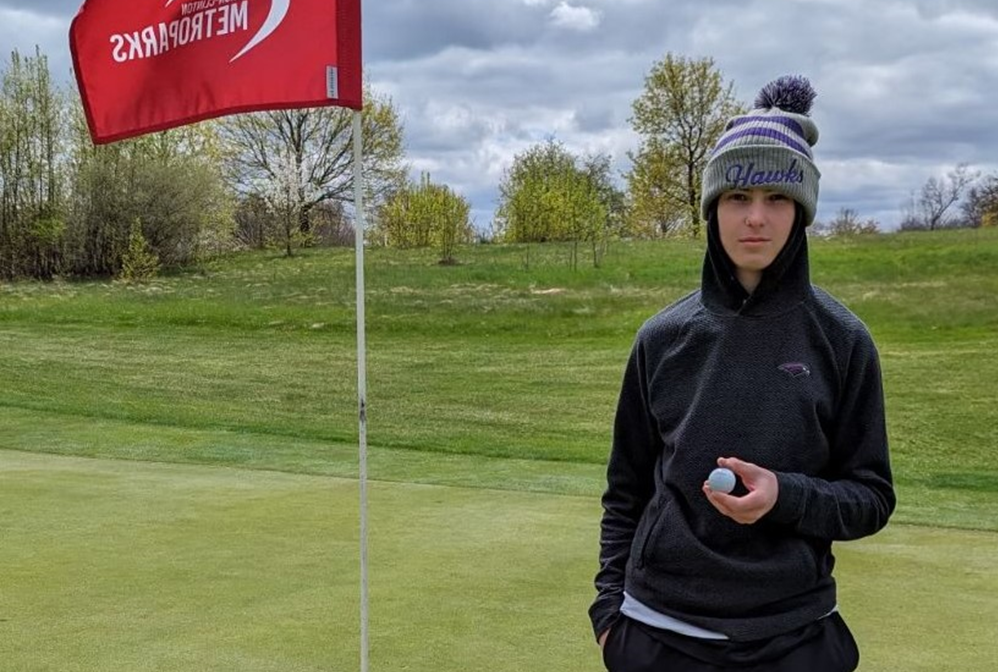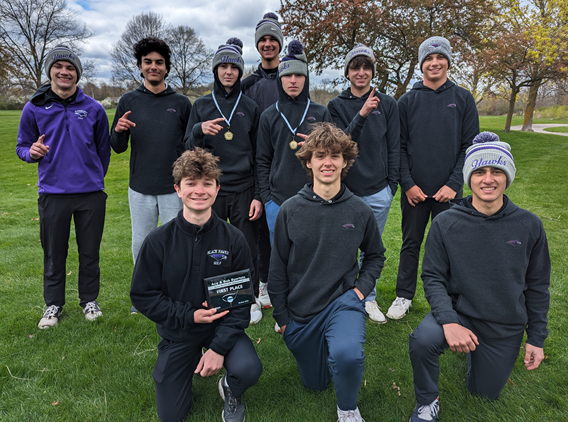
Casting Lines for Future Tournaments
August 12, 2016
By Jack Roberts
MHSAA Executive Director
The MHSAA is best known to the public for the tournaments it conducts to conclude the fall, winter and spring seasons each school year.
These tournaments, the first and largest program of the MHSAA, have survived the Vietnam War, the Korean conflict and two World Wars. They have survived the technology bubble, the housing collapse, the energy crisis and the Great Depression.
MHSAA tournaments existed at the dawn of aviation and at the time of our nation’s lunar landing. Popes, presidents and governors have changed and changed again and again, and MHSAA tournaments roll on year after year.
But the sense of tradition and permanence and inevitability of MHSAA tournaments doesn’t dissuade us from asking questions about our tournaments, even some of the most basic questions. Here are two.
Question #1
I have long been and will always be an advocate for a Ryder Cup format for the MHSAA Golf Finals, and a team tennis approach to the MHSAA Tennis Finals; but 90 years of tradition is hard to overcome. Might this be a more exciting format? Could it be co-ed? Could it reverse the decline in boys tennis participation, and increase girls golf participation? Wouldn’t it be fun to try?
Periodically, the International Olympic Committee requires each of the designated Olympic sports to defend its status, to state its case why the sport should remain a part of the Olympic program. Then, after a series or votes that retain one sport at a time, the IOC drops the sport that makes the weakest case. It does so to make room for one of the previously unlisted sports that makes the best case for inclusion.
This would appear to keep the existing Olympic sports on their toes, and to keep the Olympic movement fresh and reflective of modern trends in sports.
While I would not enjoy the controversy, I can see the potential for some positive results if the MHSAA were to invoke the same policy for determining the 14 tournaments it will provide for girls and the 14 for boys.
This might cause us to consider more deeply what a high school sport should look like, or at least what an MHSAA tournament sport should stand for.
On the one hand, we might be inclined to drop tournaments for those sports that involve mostly non-faculty coaches and non-school venues, or require cooperative programs to generate enough participants to support a team, or resort almost entirely to non-school funding, or cater to individuals more than teams.
Or perhaps this process would cause policymakers to forget traditional thinking and ask: “In this day and age, should we shake off traditional notions of sport and consider more where modern kids are coming from?” That might mean fewer team sports and more individual sports, more “extreme” sports like snowboarding and skateboarding, and more lifetime sports, meaning not just golf and tennis and running sports, but also fishing and even shooting sports.
Currently, MHSAA policy states that the MHSAA will consider sponsorship of a tournament series for any sport which 64 member schools conduct on an interscholastic basis as a result of action by the governing boards of those schools.
Should the only question be how many schools sponsor a sport, or must an activity also have certain qualities and/or avoid certain “defects?” What should an MHSAA tournament sport look like and stand for?
Question #2
Bristling from criticism that his association is a money-grabbing exploiter of children, my counterpart in another state said, “If we were running our programs just to make money, we would do very many things very differently.” I knew exactly what he meant.
Because we care about the health and welfare of students, because we mean what we say that the athletic program needs to maximize the ways it enhances the school experience while minimizing academic conflicts, and because we try to model our claim that no sport is a minor sport when it comes to its potential to teach young people life lessons, we operate our programs in ways that make promoters, marketers and business entrepreneurs laugh, cry or cringe.
If money were the only object, we would seed and select sites to assure the teams that attracted the most spectators had the best chance to advance in our tournaments, regardless of the travel for any team or its fan base. If money were the only object, we would never schedule two tournaments to overlap and compete for public attention, much less tolerate three or four overlapping events. If money were the only object, we would allow signage like NASCAR events and promotions like minor league baseball games.
Those approaches to event sponsorship may not be all wrong; they’re just not all right for us. And we will live with the consequences of our belief system.
During a typical school year, more than 20 percent of the MHSAA’s 2,097 District, Regional and Final tournaments lose money. Not a single site in golf, skiing or tennis makes a single penny. In no sport did every District, Regional and Final site have revenue in excess of direct expenses.
In fact, in only three sports – boys and girls basketball and football – is revenue so much greater than direct expenses overall that it helps to pay for all the other tournaments in which the MHSAA invests.
That’s right: invests. When we present our budget to our board, we talk about the MHSAA’s investment in providing tournament opportunities in all those sports and all those places that cannot sustain the cost of those events on their own. How much is this investment worth to students, schools and society?
These two are core questions that require our focus far in advance of talk about scheduling, site selection, seeding and the myriad matters that too often hijack our time and attention.

Bloomfield Hills JV Golfer Adds Rare Highlight to Strong Spring with Par-4 Hole-In-One
By
Tom Lang
Special for MHSAA.com
May 24, 2024
Freshman Lucas Dostal was just aiming for a drive down the middle of the par-4 17th fairway.
Just seconds later, he finished the hole at Hudson Mills Metro Park in that one swing with the driver.
The Bloomfield Hills junior varsity player didn’t see from the tee his ace on the 329-yard hole drop in the cup, so the reaction was delayed – but still refreshing.
“I hit a draw, so the ball started right, then went left and it was kinda going toward the pin but it was too hard to see,” he said in an email. “The ground was firm, and there was some down wind.
“I didn’t see the ball at all go in, but once I realized it, I was in shock. It helped me shoot a really good 71, but I tripled bogeyed (4-putt) the last hole so that kinda ruined it.”
Spoken like a true competitive golfer.
That 71 was good for medalist at the tournament April 20 versus other JV teams like Detroit Catholic Central, Novi and Grand Blanc, and brought way more attention to his game than he’d like.
The program’s junior varsity coach David Lumsden, a North Hills middle school teacher, said a lot of people assumed he’d be bumped up to varsity very soon; even local media talked that way. After all, it was the first tournament of the season, and Dostal comes into the clubhouse with an albatross and a win.
 “He is a good golfer, and the first thing I did was email the varsity coach and said I think this kid has got the goods to be on varsity,” Lumsden said. “We had purposefully left two varsity spots open because we have so many young kids who are good golfers; we didn’t know who to choose and left two spots (flexible). I suggested Lucas, but we agreed since he was a freshman to give him a couple more events and see how he does.
“He is a good golfer, and the first thing I did was email the varsity coach and said I think this kid has got the goods to be on varsity,” Lumsden said. “We had purposefully left two varsity spots open because we have so many young kids who are good golfers; we didn’t know who to choose and left two spots (flexible). I suggested Lucas, but we agreed since he was a freshman to give him a couple more events and see how he does.
“I think he shot in the high 70s the next tournament and the 80s after that. And Lucas came to me after that and said, ‘Coach, can you put me on the B team?’ I think the pressure was getting to him being No. 1 on the A team. So, me and the varsity coach agreed he needs a year on JV to play in some more matches and tournaments and grow into that varsity position.”
The JV team went 9-0 this spring in dual meets and finished in the top 10 in five of six tournaments.
“He’s going to be a great golfer,” Lumsden said. “There’s no part of his game that is lacking. He’s got a great short game. Off the tee he’s amazing. And I’ve watched him make really great recovery shots with his irons. He’s going to be really good; we’re just taking it slow. Don’t want to put all this pressure on him and end up having him quit golf too early.
“Lucas is very mild-mannered. He doesn’t talk a lot. He loves golf and has a brother (Domonic) playing on the varsity team who’s really good too. They are both golf fanatics and love the game. It’s very enjoyable to watch him getting into it and getting used to being a good golfer and getting this kind of recognition. He’s not been bragging about anything, and he’s just a solid golfer.”
If Dostal does make varsity in 2025, he should be joining his brother for that one year together on the team.
“The awareness (of his game) is there,” Lumsden said. “He’s really got the temperament to be somebody that’s going to be a top golfer.
“Many of the top golfers in the state are here in Southeast Michigan, so he’s got a lot of good competition. He might be used to going out with his buddies and beating them by 10 strokes with no problem; now he’s going against kids who are just as good as he is, or better.
“And this is just JV golf. Once you go to varsity, those kids go really low.”
PHOTOS (Top) Bloomfield Hills’ Lucas Dostal shows the ball he drove into the hole next to him for a par-4 hole-in-one April 20 at Hudson Mills Metro Park. (Middle) Dostal, standing third from right, is joined by his team after they won the Ace & Bob Byerlein JV Tournament that day. (Photos courtesy of the Bloomfield Hills JV golf program.)

